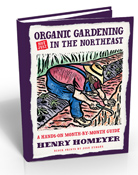Flowering Trees and Shrubs
If you have traveled a mile from your house this past month, you have passed by plenty of blooming trees and shrubs. Some, like those bold, deep pink or magenta PJM rhododendrons, are brassy and loud in their announcement of spring. Others, like the maples and birches, are more subtle. All give me joy. All are worth observing.

Maple Flowers
It seems to me that maples are given scant attention when it comes to their flowers, but this year the maples in my part of the world are producing prodigious numbers of blossoms. Most trees have an occasional year when they produce a bumper crop of fruit, nuts or seeds. This appears to be a mast year for maples. Their flowers appear first each year, before the leaves, and are dainty greenish yellow. The flowers hang or dangle on thin green 1-3 inch long strings in a merry, decorative fashion. They don’t resemble flowers we pick or admire, for the most part. Still, given the numbers of them this year, they make a dramatic statement, creating a yellow/lime green cast to the entire tree, glorious from a distance.
The birches also have interesting blossoms, which are called catkins. Catkins are hanging appendages 2-4 inches long, a bit like tiny fuzzy sausages hanging in groups of 2-3 that produce (or receive) pollen. There are separate male and female catkins. Catkins also appear on some willows, and poplars. Like any wind-pollinated flower, catkins produce lots of pollen and may cause allergic reactions in some people. Male poplar trees produce pollen which is very irritating to many people, and is a main cause of hay fever at this time of year √ though the females are not allergy producers.
If you suffer from hay fever, a good resource is Tom Ogren’s book, Allergy-Free Gardening: The Revolutionary Guide to Healthy Landscaping. Ogren lists not only trees and shrubs, but many common flowers and rates them on a scale of 1 to 10 in term of how potent the pollen is.

shadbush, shadblow or serviceberry (Amelanchier spp)
The shadbush, shadblow or serviceberry (Amelanchier spp) have been blooming along the roadside in recent weeks. These are white-flowered understory trees or shrubs that bloom towards the end of the forsythia display, but before lilacs. The blossoms resemble apple blossoms, but the trees (or shrubs) have smooth gray bark and a lankier overall appearance than apples. They vary in size, but rarely get taller than 30 or 40 feet in the wild. As a domesticated shrub they can be kept in the 6-10 foots size.

Shadbush Flowers
If you want a good bush for feeding birds in summer, shadbush is a good choice. They produce blue berries that are much beloved by birds, and are generally stripped off the bushes before I get a chance to taste them. But they are tasty for us, too. And I love the smooth gray bark and the multi-stemmed growth of the bushes. The most floriferous of the varieties, for me, is Amelanchier arborea ‘Cole’s Select’. I found it at E.C. Brown’s Nursery in Thetford, VT. (www.ecbrownnursery.com) and I have gotten other varieties there, too.
This is a good time to prune your forsythia. As early spring bloomers, they set their blossoms for next spring this summer, so prune by early summer to get the best display next spring. That is a good plan for any spring-blooming tree or shrub. If you have forsythia that only bloom on the lower branches, you have an old fashioned variety, one that is easily susceptible to winter burn. The blooming branches are those that were protected by snow. The best solution? Cut them down, dig them up, and get a better variety. ‘New Hampshire Gold≠, ‘Vermont Sun≠ and ‘Northern Sun≠ are good, hardy varieties that should do well for you. Or ask at your family-run garden center for a good one for our climate.
Apples and crabapples set their buds for next year by early June. You should be done with pruning them by now, though a little pruning now is all right. Fruit buds are brittle at this time of year, and you can easily snap them off when pulling prunings from the tree, so be careful when removing branches. Pruning them when dormant is best, which is why March is the usual month. It≠s also fine to do some pruning in the heat of August.
Lilacs are some of the toughest and most wonderful of the blooming shrubs. Old farmers scattered wood ashes around the base of their lilacs in March to keep the soil sweet (not too acidic). You can do that now √ or anytime, really √ to help with next year≠s bloom. A quart yogurt container of limestone or wood ashes is fine for a small lilac or a couple of cans for bigger ones. It really does make a difference. And lilacs in full sun bloom much better than those planted in shade. Buy lilacs in bloom so you can see their color and sniff their fragrance before making a purchase.
This is a great time to plant trees in shrubs, but only if you are willing to water them all summer. If you≠ll likely forget, plant in the fall.


